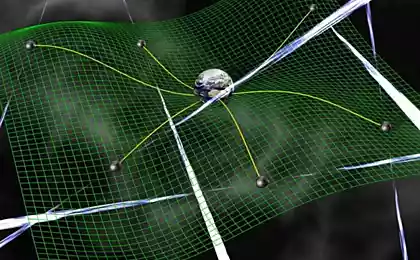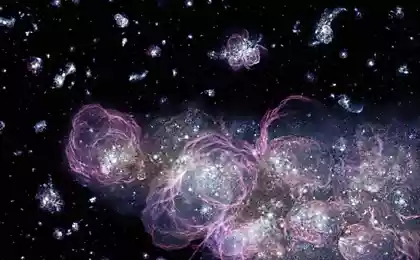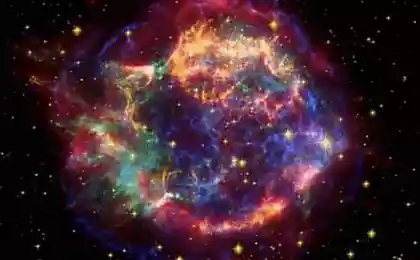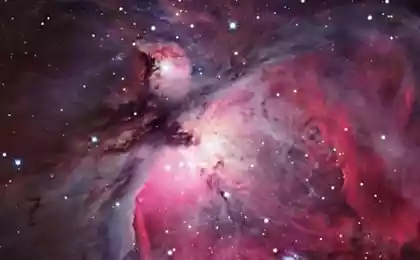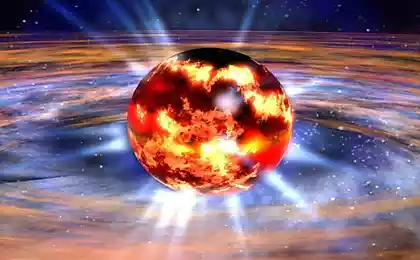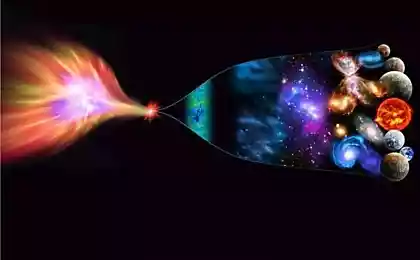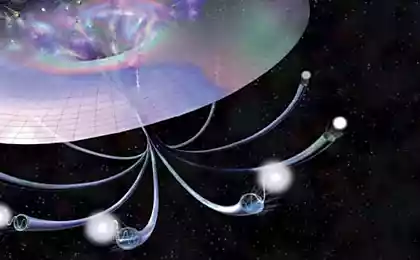659
Why is there something rather than nothing?
Some physicists think they can explain how our universe was formed. If they are right, then our universe could arise from nothing.
People argue about why the universe exists, for thousands of years. Almost every ancient culture people have come up with his own theory of the creation of the world – most of them included the divine purpose, and the philosophers wrote many volumes about it. But science can tell us about the creation of the Universe not so much.
However, in recent physicists and cosmologists began to have a discussion about it. They say that now we are well aware of the history of the Universe and the laws of physics that explain how it works. Scientists believe that this information will allow us to understand how and why there is space.
According to them, the universe, from the Big Bang to our cosmos with many stars that exists today came from nothing. It was bound to happen, scientists say, because "nothing" is actually inherently unstable.
This idea may seem strange or simply fabulous. But physicists say that it originates from the two most powerful and successful theories: quantum physics and General relativity.
So, how everything could come from nothing?
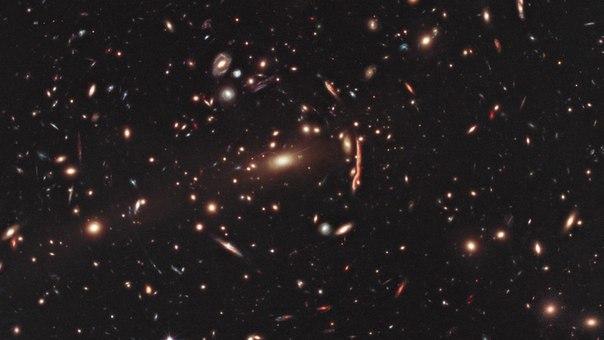
Particles from empty space
To begin with, we should turn to quantum physics. This is an area of physics that studies very small particles: atoms and even smaller objects. Quantum physics is an extremely successful theory, and it became the Foundation for the advent of most modern electronic gadgets.
Quantum physics tells us that empty space does not exist. Even the most perfect vacuum is filled with a swaying cloud of particles and antiparticles that appear out of nothing and then vanish into nothing. These so-called "virtual particles" exist for a short time and therefore we can't see them. However, we know that they are because of the effects that cause.
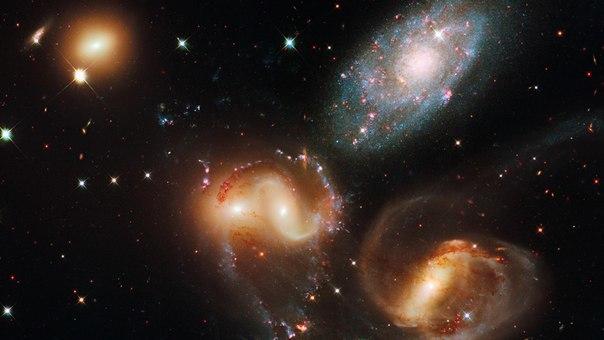
The space and time of the lack of space and time
Now let's move our eyes from tiny objects such as atoms, to very large things like galaxies. Our best theory to explain such great things, is the General theory of relativity, the main achievement of albert Einstein. This theory explains how interdependent space, time and gravity.
General relativity differs from quantum physics, and to date, nobody has been able to put them into a single puzzle. However, some theorists, using a carefully chosen similarities, to bring the two theories to each other in specific tasks. For example, this approach was used by Stephen Hawking of Cambridge University, when he described black holes.
Physicists have found that when quantum theory is applied to the space at small scales, the space becomes unstable. Space and time instead to remain smooth and continuous, begins to boil and to foam, taking the form of bursting bubbles.
In other words, little bubbles of space and time can form spontaneously. "In the quantum world space and time are unsustainable, says astrophysicist Lawrence Maxwell Krauss from Arizona state University. – Thus, you can form a virtual space-time just as you form virtual particles".
Moreover, if these bubbles can occur, you can be sure that they will arise. "In quantum physics, if something is not forbidden, it necessarily happens with a certain probability," — said Alexander Vilenkin from tufts University in Massachusetts.

The universe of the bubble
So, not only particles and antiparticles can emerge out of nothing and becoming nothing: bubbles of space-time can do the same. However, there is a big gap between the infinitely small space-time bubble the Universe is huge, consisting of more than 100 billion galaxies. Indeed, why would the bubble just appeared to disappear in the blink of an eye?
And it turns out there is a way to force the bubble to survive. This requires another trick, which is called the cosmic inflation.
Most modern physicists believe that the universe began with the Big Bang. First, all matter and energy in space was compressed into an incredibly small point, which then began to expand rapidly. That our universe is expanding, scientists learned in the twentieth century. They saw that all galaxies are moving away from each other, and then, once they were placed close to each other.
According to the inflationary model of the Universe immediately after the Big Bang, the universe expanded much faster than in our days. This outlandish theory appeared in the 1980s, thanks to Alan Guth of the Massachusetts Institute of technology, and was modified Soviet physicist Andrei Linde, who now works at Stanford University.
The idea of the inflationary Universe model is that immediately after the Big Bang, a small bubble of space expanded at a colossal rate. In an incredibly short time he from point, smaller than the nucleus of an atom, made up of the volume of the grains. When in the end, the expansion slowed down, which caused his power was transformed into matter and energy that fill the Universe today.
Despite its apparent oddity, the inflationary model of the Universe fits the facts well. In particular, it explains why the CMB — cosmic microwave background radiation remaining from the Big Bang — uniformly distributed in the sky. If the universe was expanding not so fast, then, most likely, the radiation would be raspredeleni more chaotic than we see today.
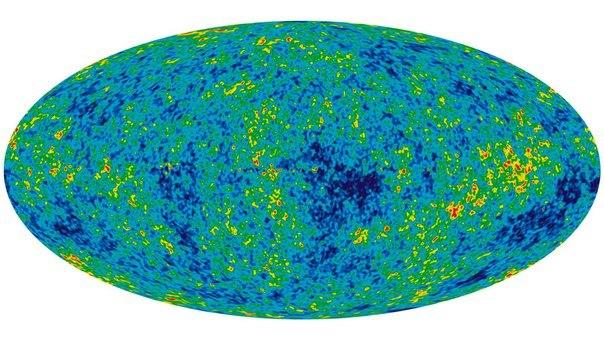
The universe is flat, and why is this fact important
Inflation also helps cosmologists to determine the geometry of our Universe. It turned out that the knowledge of geometry is necessary for understanding how the cosmos could arise from nothing.
The General theory of relativity of albert Einstein says that space-time in which we live, can take three different forms. It can be flat like the surface of the table. It can be twisted, as the area of the sphere, and so if you move from a definite point, be sure it will return. Finally, it can be bent outward like a saddle. So what form of space-time we live in?
This can be explained sleduyushim way. You may remember from school maths lessons that the angles of a triangle amount to 180 degrees. This is true only when the triangle is in a flat space. If you draw a triangle on the surface of a balloon, the sum of the three angles will be greater than 180 degrees. If you draw a triangle on the surface, like a saddle, the sum of the three angles is less than 180 degrees.
In order to understand that our universe is flat, we need to measure the angles of a gigantic triangle. And this is the case when it comes in the inflationary model of the Universe. It determines the average size of hot and cold spots in the cosmic microwave background. These spots were measured in 2003, and that astronomers were able to use as analogues of the triangle. As a result, we know that the largest of our available nablyudeniyam scale in our Universe is flat.
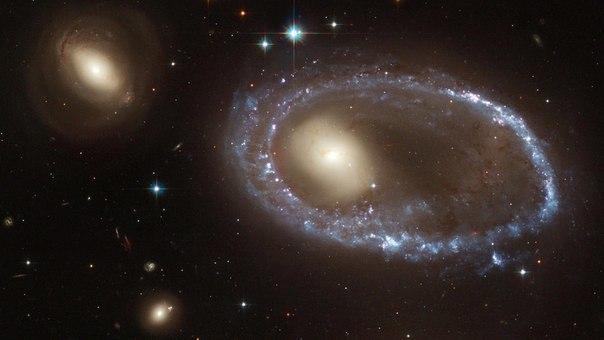
Thus, it was found that a flat universe is a necessity. This is because only a flat universe could have formed from nothing.
All that exists in the Universe, from stars and galaxies and ending with the light they cause, was something to be formed. We already know that the particles occur on a quantum level and therefore we might expect that in the Universe there are some small things. But for the education of all these stars and planets requires a huge amount of energy.
But how did the universe get all this energy? I know, it sounds weird, but energy didn't have somewhere to take it. The fact that every object in our Universe has gravity and attracts other objects. And it balances the energy needed to create the first matter.
It's a bit like the old scales. You can put any heavy object on one scale and the scales will be in equilibrium if the other end is the object of the same weight. In the case of the Universe, at one end is matter, and "balances" her gravity.
Physicists have calculated that in a flat Universe the energy of matter is exactly equal to the energy of gravity that this matter creates. But it works only for a flat Universe. If the universe were curved, the balance would not exist.

Universe or multiverse?
Now, the "cooking" of the Universe looks pretty easy. Quantum physics tells us that nothingness is unstable, and the transition from "nothing" to "something" needs to be almost inevitable. Further, owing to the inflation of a small space-time bubble can form in massive, dense universe. As Krauss wrote, "the Laws of physics as we understand them today, admit that our universe formed from nothing – there was no time, no space, no particles, nothing we know."
But why the universe was formed only once? If one bubble has swollen to the size of our Universe, why can't other bubbles?
Linde offers a simple but psychedelic response. He believes that the Universes arose and there continually, and this process will continue forever.
When inflation ends the Universe, says Linde, it still continues to surround the space in which there is inflation. It gives rise to more Universes, and around them formed even more space in which there is inflation. Once inflation starts, it will continue indefinitely. Linda called it eternal inflation. Our universe may be just a grain of sand on an endless sandy beach.
Other universes can be very different from ours. The neighboring universe may be five spatial dimensions, while our there are only three – length, width and height. The force of gravity can be 10 times more or 1000 times weaker. Or gravity may not be at all. Matter may be composed of other particles.
Thus, there may be not fit into our minds the variety of Universes. Linda believes that eternal inflation is not just a "totally free lunch", but this is the only lunch at which all available meals.published
Author: Robert Adler
Translation: Ekaterina Shutova
P. S. And remember, only by changing their consumption — together we change the world! ©
Join us in Facebook , Vkontakte, Odnoklassniki
Source: vk.com/fizika_nevozmojnogo?w=page-35207911_50082670
People argue about why the universe exists, for thousands of years. Almost every ancient culture people have come up with his own theory of the creation of the world – most of them included the divine purpose, and the philosophers wrote many volumes about it. But science can tell us about the creation of the Universe not so much.
However, in recent physicists and cosmologists began to have a discussion about it. They say that now we are well aware of the history of the Universe and the laws of physics that explain how it works. Scientists believe that this information will allow us to understand how and why there is space.
According to them, the universe, from the Big Bang to our cosmos with many stars that exists today came from nothing. It was bound to happen, scientists say, because "nothing" is actually inherently unstable.
This idea may seem strange or simply fabulous. But physicists say that it originates from the two most powerful and successful theories: quantum physics and General relativity.
So, how everything could come from nothing?

Particles from empty space
To begin with, we should turn to quantum physics. This is an area of physics that studies very small particles: atoms and even smaller objects. Quantum physics is an extremely successful theory, and it became the Foundation for the advent of most modern electronic gadgets.
Quantum physics tells us that empty space does not exist. Even the most perfect vacuum is filled with a swaying cloud of particles and antiparticles that appear out of nothing and then vanish into nothing. These so-called "virtual particles" exist for a short time and therefore we can't see them. However, we know that they are because of the effects that cause.

The space and time of the lack of space and time
Now let's move our eyes from tiny objects such as atoms, to very large things like galaxies. Our best theory to explain such great things, is the General theory of relativity, the main achievement of albert Einstein. This theory explains how interdependent space, time and gravity.
General relativity differs from quantum physics, and to date, nobody has been able to put them into a single puzzle. However, some theorists, using a carefully chosen similarities, to bring the two theories to each other in specific tasks. For example, this approach was used by Stephen Hawking of Cambridge University, when he described black holes.
Physicists have found that when quantum theory is applied to the space at small scales, the space becomes unstable. Space and time instead to remain smooth and continuous, begins to boil and to foam, taking the form of bursting bubbles.
In other words, little bubbles of space and time can form spontaneously. "In the quantum world space and time are unsustainable, says astrophysicist Lawrence Maxwell Krauss from Arizona state University. – Thus, you can form a virtual space-time just as you form virtual particles".
Moreover, if these bubbles can occur, you can be sure that they will arise. "In quantum physics, if something is not forbidden, it necessarily happens with a certain probability," — said Alexander Vilenkin from tufts University in Massachusetts.

The universe of the bubble
So, not only particles and antiparticles can emerge out of nothing and becoming nothing: bubbles of space-time can do the same. However, there is a big gap between the infinitely small space-time bubble the Universe is huge, consisting of more than 100 billion galaxies. Indeed, why would the bubble just appeared to disappear in the blink of an eye?
And it turns out there is a way to force the bubble to survive. This requires another trick, which is called the cosmic inflation.
Most modern physicists believe that the universe began with the Big Bang. First, all matter and energy in space was compressed into an incredibly small point, which then began to expand rapidly. That our universe is expanding, scientists learned in the twentieth century. They saw that all galaxies are moving away from each other, and then, once they were placed close to each other.
According to the inflationary model of the Universe immediately after the Big Bang, the universe expanded much faster than in our days. This outlandish theory appeared in the 1980s, thanks to Alan Guth of the Massachusetts Institute of technology, and was modified Soviet physicist Andrei Linde, who now works at Stanford University.
The idea of the inflationary Universe model is that immediately after the Big Bang, a small bubble of space expanded at a colossal rate. In an incredibly short time he from point, smaller than the nucleus of an atom, made up of the volume of the grains. When in the end, the expansion slowed down, which caused his power was transformed into matter and energy that fill the Universe today.
Despite its apparent oddity, the inflationary model of the Universe fits the facts well. In particular, it explains why the CMB — cosmic microwave background radiation remaining from the Big Bang — uniformly distributed in the sky. If the universe was expanding not so fast, then, most likely, the radiation would be raspredeleni more chaotic than we see today.

The universe is flat, and why is this fact important
Inflation also helps cosmologists to determine the geometry of our Universe. It turned out that the knowledge of geometry is necessary for understanding how the cosmos could arise from nothing.
The General theory of relativity of albert Einstein says that space-time in which we live, can take three different forms. It can be flat like the surface of the table. It can be twisted, as the area of the sphere, and so if you move from a definite point, be sure it will return. Finally, it can be bent outward like a saddle. So what form of space-time we live in?
This can be explained sleduyushim way. You may remember from school maths lessons that the angles of a triangle amount to 180 degrees. This is true only when the triangle is in a flat space. If you draw a triangle on the surface of a balloon, the sum of the three angles will be greater than 180 degrees. If you draw a triangle on the surface, like a saddle, the sum of the three angles is less than 180 degrees.
In order to understand that our universe is flat, we need to measure the angles of a gigantic triangle. And this is the case when it comes in the inflationary model of the Universe. It determines the average size of hot and cold spots in the cosmic microwave background. These spots were measured in 2003, and that astronomers were able to use as analogues of the triangle. As a result, we know that the largest of our available nablyudeniyam scale in our Universe is flat.

Thus, it was found that a flat universe is a necessity. This is because only a flat universe could have formed from nothing.
All that exists in the Universe, from stars and galaxies and ending with the light they cause, was something to be formed. We already know that the particles occur on a quantum level and therefore we might expect that in the Universe there are some small things. But for the education of all these stars and planets requires a huge amount of energy.
But how did the universe get all this energy? I know, it sounds weird, but energy didn't have somewhere to take it. The fact that every object in our Universe has gravity and attracts other objects. And it balances the energy needed to create the first matter.
It's a bit like the old scales. You can put any heavy object on one scale and the scales will be in equilibrium if the other end is the object of the same weight. In the case of the Universe, at one end is matter, and "balances" her gravity.
Physicists have calculated that in a flat Universe the energy of matter is exactly equal to the energy of gravity that this matter creates. But it works only for a flat Universe. If the universe were curved, the balance would not exist.

Universe or multiverse?
Now, the "cooking" of the Universe looks pretty easy. Quantum physics tells us that nothingness is unstable, and the transition from "nothing" to "something" needs to be almost inevitable. Further, owing to the inflation of a small space-time bubble can form in massive, dense universe. As Krauss wrote, "the Laws of physics as we understand them today, admit that our universe formed from nothing – there was no time, no space, no particles, nothing we know."
But why the universe was formed only once? If one bubble has swollen to the size of our Universe, why can't other bubbles?
Linde offers a simple but psychedelic response. He believes that the Universes arose and there continually, and this process will continue forever.
When inflation ends the Universe, says Linde, it still continues to surround the space in which there is inflation. It gives rise to more Universes, and around them formed even more space in which there is inflation. Once inflation starts, it will continue indefinitely. Linda called it eternal inflation. Our universe may be just a grain of sand on an endless sandy beach.
Other universes can be very different from ours. The neighboring universe may be five spatial dimensions, while our there are only three – length, width and height. The force of gravity can be 10 times more or 1000 times weaker. Or gravity may not be at all. Matter may be composed of other particles.
Thus, there may be not fit into our minds the variety of Universes. Linda believes that eternal inflation is not just a "totally free lunch", but this is the only lunch at which all available meals.published
Author: Robert Adler
Translation: Ekaterina Shutova
P. S. And remember, only by changing their consumption — together we change the world! ©
Join us in Facebook , Vkontakte, Odnoklassniki
Source: vk.com/fizika_nevozmojnogo?w=page-35207911_50082670



